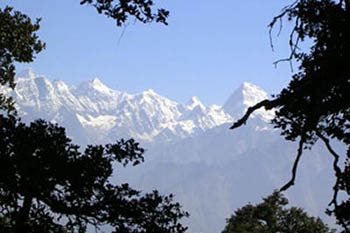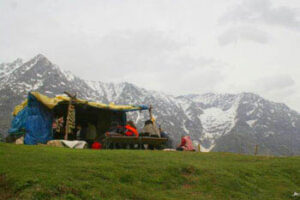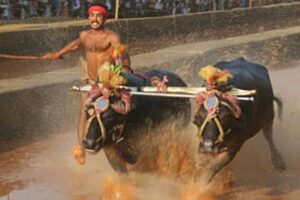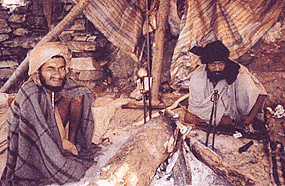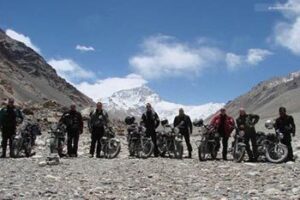
The Sangai Festival: Dedicated to a Deer that Almost Went Extinct
By Sushant Pandey
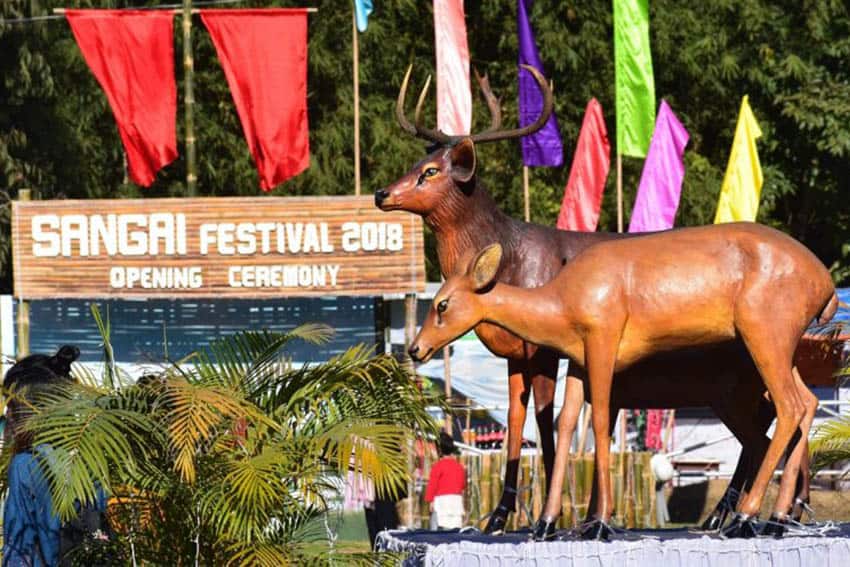
My scooter ride in North-East India was well on its course, and after spending 30 days in some of the remotest areas of India, I entered the state of Manipur.
Before embarking on this journey, the only information I had about the region was the one I acquired during my school days.
My knowledge of northeastern India was confined to the capitals of the seven states and a few renowned sites.
But the last thirty days were an eye-opener, and I learned what 20 years of formal education couldn’t deliver.
Halfway to my solo ride in north-east India, now I was in Manipur, a state with a prolonged history of insurgency. The majority of Indians are unaware of what Manipur possesses and what it can offer, and I was no exception.
In Manipur, I encountered a festival dedicated to an animal species, which made a remarkable comeback from the verge of extinction. The festival is known as the “Sangai Festival,” and it derives the name from Sangai Deer, the state animal of Manipur.
Manipur, the Jewel State of India and the Loktak Lake
Manipur, a small state in Northeast India, is known for its vast rice plains surrounded by the Purvanchal mountain range. The word Manipur translates to “Jewel State,” and locally called ‘Kangleipak’ or ‘Sanaleipak’ (golden land) by its inhabitants.
Manipur is a hidden gem for travelers, and the state is a perfect example of cultural and religious amalgamation anywhere found in India. Situated in the far eastern side of India, it forms the international border of India with Myanmar.
The game of Polo (Sagol Kangjei) originated in Manipur, and it hosts the only floating national park in the world.
Giant Loktak Lake
Within Manipur lies the Loktak Lake, the biggest lake in northeast India, spanning over an area of 40 km2 (15 sq. mi). The lake lies 50 kilometers southward to the state capital Imphal. The Loktak Lake is an integral part of Manipur, and for centuries it served as the source of agriculture, fishing, irrigation, and drinking water.

It hosts more than 400 species of marine animals and fish, which form the main diet of Manipuri People. Yet the Loktak Lake is known for its native grass, which grows within the lake and known as Phumdi. The Phumdi is a heterogeneous mass of vegetation, soil, and organic matter at various stages of decomposition, and they float over the water.
The Only Floating National Park in the World
On the southern shore of the Loktak Lake, the Phumdi have accumulated over centuries, and today it forms the Only Floating National Park in the world known as the Keibul Lamjao National Park.
Keibul Lamjao is a Manipuri word meaning (Kei – Tiger, Bul – vast, Lamjao-Large Land), signifying the place where a large number of tigers come for rescue during the forest fire.
Within this national park lives a deer species locally known as Sangai Deer. The name Sangai (Sa “animal” and Ngai “in awaiting”) came into existence from the peculiar behavior where the animal stops occasionally and looks back as if it is waiting for someone.

Sangai is a brow-antlered deer, a native of Manipur, and it lived in the vast plains of Keibul Lamjao for centuries. The deer is deeply rooted in the Manipuri Culture and folklores. By the early 19th century, their number started dwindling, and they were declared extinct in the 1950s.
Yet in 1953, six Sangai were spotted in the national park, thereby attracting the government’s attention. Since then, the State and the Central Government took positive measures to protect this rare and endangered species. With efforts from the local and central levels, the number of Sangai increased from six in 1953 to 260 in 2014.

To commemorate Sangai and to showcase the culture of Manipur, the state government came up with an idea of the Sangai Festival.
The festival is celebrated in a similar way as the Hornbill Festival of Nagaland, and it is one of the biggest festival in North-East India.
The Sangai Festival is a ten-day cultural extravaganza organized by the Manipur Tourism Department annually from 21 to 30 November.
The festival is celebrated throughout the state, Imphal, and Moirang hosts the main events. The ten days extravaganza showcases the history, art, culture, and traditions of the state via plays and dance.
My Encounter with Manipur and Sangai Festival
As mentioned earlier, I was on a sixty days solo ride to northeast India. Northeastern India was on my bucket list for a long time, yet I never got an opportunity due to the challenges the region possesses.
During my ride, Manipur was the fourth state where I arrived after exploring Assam, Meghalaya, and Mizoram. Before coming to Manipur, I was also unaware of all the facts I mentioned above. For me, it was one of the seven states in the region, and my primary aim was to attend the Hornbill Festival in Nagaland. Yet the Sangai festival came out of nowhere and made a significant impact on my entire journey.

Moreover, the festival came as solace as I was exhausted by a continuous ride in the region. In northeast India, I rode on some of the dangerous roads in India (250 kilometers in sixteen hours!), and they tested my endurance. I was utterly exhausted, and I had no idea what to do next. In these tough times, the flat plains and moderate roads of Manipur came as a blessing.
In Moirang, I was greeted by a festive atmosphere. I had no clue about the celebrations, and locals informed me about the Sangai Festival. Still, unwary of the entire story, I visited the Loktak Lake, and the local guide explained the whole story. It transformed me from a naive traveler to a well-informed one and forced me to read about the festival, the national park, and, most importantly, the Sangai deer.
Initially, I allocated a fewer number of days to Manipur in my itinerary. Now with the Sangai festival in the picture, I extended my stay from six days to ten.
Although the festival is celebrated throughout the Manipur, the events at two sites, i.e., Moirang and Imphal, attract the majority. Since I was already in Moriang, the next day, I headed straight to the event site. At the Sangai Festival site, I was greeted by a replica of three Sangai Deer, a father, mother, and fawn.
The ambiance was energized with a band playing local Manipuri songs, and although the lyrics bounced over my mind, I enjoyed the beats and the music. The site at Moraing resembled to a fare, catering to the needs of children, adults, and the elderly. The evening was marked by the dance performance from neighboring states and, in particular, the Singhi Chham Dance of Sikkim.
I was in no position to explore Manipur unless I get a glimpse of the deer, which is entrenched in the Manipuri culture. My eagerness forced me to visit the national park, and the next day I reached its entrance gate before the official opening time. Once in, I headed to the watchtower to get a glimpse of an animal that was nearly extinct from the planet. After waiting for 30 minutes, finally, I spotted one, a fawn with his mother. The Sangai’s perfectly camouflage with the surrounding, and it requires a deep precision to locate one.
The forest department provides binoculars as it is difficult to notice them with naked eyes. I tried capturing a few with my zoom lens but failed miserably. As the day proceeded, Sangai count increased too, and I spot two herds with 6-7 deer in each.

The Sangai is timid deer, and it hides, noticing noise or disturbance. The best time to spot Sangai in the national park is in the early morning or the evening when the animal comes for grazing. The best time to visit the national park is between December to March. Do not forget to take a boat ride within the park and check if the landmass actually floats on water or not.
Moreh, A town on India-Myanmar Border
I had already allocated my next day to visit Moreh, a border town on the India-Myanmar border. At Moreh, Indian citizens are allowed to cross the border without any visa restrictions and visit Myanmar. In the last two days, I explored the plains of Manipur, and today I got a glimpse of the hills of Manipur.
Moreh lies 110 kilometers from Imphal. At Moreh, I crossed the India-Myanmar Border, and it reminded me of my visit to Rih-Dil Lake in Mizoram, where I crossed the border for the first time. Moreh is famous for the ICP (Integrated Check Post), and the town is known as the gateway to Southeast Asia.
The Indian government plans to construct a road that will connect Thailand to India via Myanmar. The condition of the roads in Manipur is in good shape when compared with other northeastern states of the regions. I enjoyed my Moreh ride of 250 kilometers and particularly the Myanmar beer. The next day I planned to ride for Imphal, the capital of Manipur, and in Imphal, the celebration is at its zenith.
Sangai Festival in Imphal
In Imphal, I was greeted by the chaotic streets and honking, something I first missed since I started on my journey in northeastern India. In Imphal, there are two venues for the festival, the Hapta Kangjeibung, and Bheigyachandra Open Air Theatre. These two sites lie close to each other, and a third site Mapal Kangjeibung (oldest polo ground in the world) hosts the sporting events.

Before visiting any of these sites, I decided to visit the Manipur State Museum to get a better idea of the state. The state museum exhibits tribal ornaments, Manipuri textiles, agricultural equipment, and other items of cultural relevance.
The museum is organized into galleries hosting relics related to natural history, ethnology, and archaeology. I would recommend visitors to explore the state museum in their next visit to Manipur.
The next day, I headed to Hapta Kangjeibung, an exhibition site showcasing the famous information about Manipur via artifacts, sculptures, and canvass drawings. Of all the replicas, I was astonished by the Dzakou Valley. The Dzakou Valley is the most famous trekking route in North-East India. Although the majority of the valley lies in Manipur, its entrance is in Nagaland, a neighboring to Manipur.
I had reserved the afternoon for visiting the Imphal War Cemetery dedicated to soldiers who sacrificed their lives during the Battle of Kohima and Imphal in the Second World War. Manipur was the fighting ground between the Allied and Axis power during the Second World War, and the city witnessed one of the bloodiest battles fought during the Second World War.
Open Air Festival

The evening I spent at Bheigyachandra Open Air Theatre, the main site for Sangai Festival in Imphal. The theatre hosts cultural events and performances similar to Kisama Heritage Village in Nagaland. I reached earlier and grabbed a front row to get a better view of the events. As I reached Imphal on the third day of the Sangai Festival, there was no scope of inaugural ceremonies and a vote of thanks, and the event started on time.
The dance by local artists, particularly the one depicting Krishna and Radha in Manipuri attire, was the most spectacular one. Hinduism is deeply rooted in Manipuri culture, and about 45% of the total population of the state follows Hinduism.
Temples dedicated to Hindu God and Goddess can be found throughout Manipur, and religion shaped the culture of the state. The Bamboo dance of north-east India, where artists perform between the moving Bamboo shafts exhibiting their reflexes and agility, stole the show. The events at Bheigyachandra continued till 9 PM, and the environment was charged with spectacular performances and applause.
Kangla Fort
The next day I visited some more famous places in Imphal city, of which Kangla Fort and IMA Market were most prominent. The Polo ground, Mapal Kangjeibung, hosts Polo Matches between teams from different parts of India. There is a difference between the Hornbill festival of Nagaland and the Sangai Festival in Manipur.
While Hornbill exhibits the customs and traditions of sixteen tribes of Nagaland, the Sangai festival is majorly dedicated to an animal. Yet when it comes to the scale of the celebration, Sangai Festival gives a tough competition to the Hornbill festival of Nagaland. My ten days in Manipur were some of the memorable days of my ride in north-east India.
Although I was on a solo trip, I never felt alone, thanks to the hospitality and friendly nature of the local population. If anyone plans to visit north-east India, plan during the November-December transition time. It will allow one to witness the biggest cultural extravaganza of two north-east Indian states simultaneously.

Getting There
Apart from the Sangai Festival, Manipur is renowned for its historical buildings, monuments, and hosts many war memorials.
Commuting within the city and the nearby areas isn’t a concern as the roads in Manipur are far better than other neighboring states.
The city of Imphal has both expensive and low-cost hotels and homestays catering to the demand for every type of traveler.
Unlike Kohima, where the tariff skyrockets during the Hornbill festival, I was able to get a decent room after paying a mere 500 rupees in Imphal.
In a nutshell, visiting Imphal is as easy as visiting any other city in India. Yet, Imphal and Manipur have a lot more to offer when compared with any tourist destination in India.
 Sushant Pandey is a history and geography Lover and part-time biker and traveler. An IT professional by the job and loves to explore places on a motorcycle. He loves watching documentaries or cooking. Visit his blog at Knowledge of India.
Sushant Pandey is a history and geography Lover and part-time biker and traveler. An IT professional by the job and loves to explore places on a motorcycle. He loves watching documentaries or cooking. Visit his blog at Knowledge of India.
- Missouri Sports Travel Adventure: From Landmarks to Ballparks - January 21, 2026
- What First-Time Visitors Get Wrong About Visiting Iceland - January 15, 2026
- Bareboat Charter vs all-inclusive Crewed: Which Luxury Charter Fits You? - December 29, 2025


